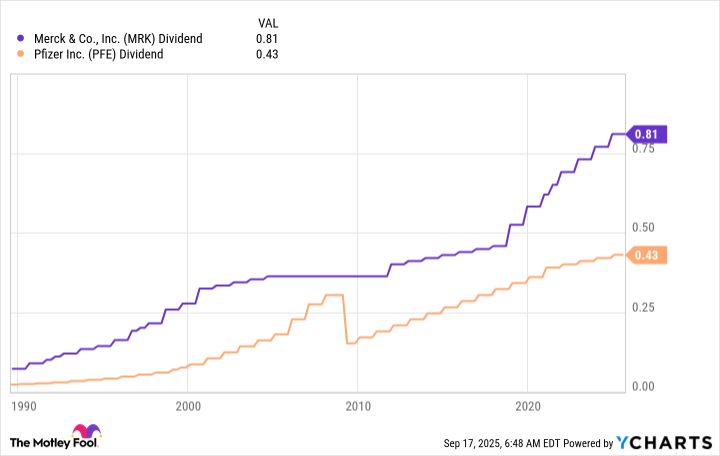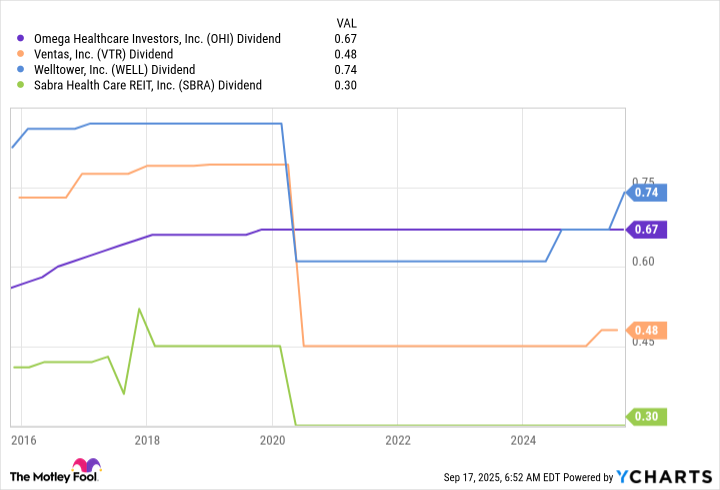3 Brilliant Dividend Stocks to Buy Now and Hold for the Long Term
These three companies have raised their payouts for 50 years or more.
Diving into the stock market can be an excellent way to build lasting wealth. One type of stock that you may find appealing is dividend stocks. A study conducted by Hartford Funds found that, over a 50-year period, dividend stocks consistently outperformed non-dividend payers with lower volatility.
Dividend Kings are companies that have consistently increased their dividends for 50 years or longer. These stalwarts have earned the trust of their shareholders and consistently demonstrated a proven ability to grow payouts year after year, regardless of the economic conditions.
If you’re looking to boost your portfolio with a passive income component and seek steady returns, here are three dividend stocks that could make excellent additions today.
Image source: Getty Images.
Federal Realty Investment Trust
Federal Realty Investment Trust (FRT -0.59%) operates as a real estate investment trust (REIT). It specializes in high-quality retail-based properties, which include shopping centers and mixed-use properties. As a REIT, Federal Realty is required to distribute 90% of its taxable income to shareholders, making it a popular choice among dividend investors.
Federal Realty holds the distinction of being the only REIT to earn Dividend King status, having raised its payout for 57 consecutive years. This impressive streak is a testament to its diversified holdings and strong balance sheet in what can be a volatile real estate market.
The REIT primarily invests in real estate regions characterized by high population density and affluent populations. This approach helps insulate it from changing economic conditions, as more affluent households can be resilient in the face of recessions or inflation in the economy. With a strong business and robust development pipeline supported by steady funds from operations growth, Federal Realty is a quality dividend stock to consider buying today.
Cincinnati Financial
Cincinnati Financial (CINF 0.06%) provides property and casualty (P&C) insurance to corporate and individual customers. It’s one of the top 25 largest P&C insurers in the United States.
In the insurance industry, underwriting profitable policies is the name of the game. Insurers like Cincinnati Financial operate in a highly competitive environment, so accurately assessing risk and pricing policies is crucial.
Over the past five years, Cincinnati Financial’s combined ratio has averaged a solid 94.6%. This means that for every $100 in premiums it writes, it has generated roughly $5 in profit. In the highly competitive insurance industry, the combined ratio tends to average around 100%, so consistently generating an underwriting profit is key to sustainable, long-term growth.
Cincinnati Financial boasts an impressive history of raising its annual cash dividend over the past 65 years. Only seven companies can boast a longer streak. Its long track record is a testament to its sound underwriting and stellar capital management. With a conservative dividend payout ratio of 29%, Cincinnati Financial is well-positioned to keep rewarding investors with a growing dividend.
S&P Global
S&P Global (SPGI -0.03%) provides credit ratings to entities that issue debt worldwide and serves an important role in financial markets. As a credit rating agency, it provides opinions about credit risk and the ability and willingness of entities to meet their financial obligations. Investors rely on these opinions on credit quality to help manage risk.
The company also owns the S&P 500 index (in a joint venture with CME Group), along with a variety of other index benchmarks used by professional investors. Finally, it provides data and analytics, such as through its Capital IQ Pro platform, which offers another stream of cash flow that’s uncorrelated with credit ratings.
S&P Global enjoys a robust 50% share of the credit ratings market, giving it a strong competitive advantage, especially considering the importance of credit ratings for the global economy. With its stable and diverse business model and strong balance sheet, S&P Global has grown its dividend payout for 52 consecutive years and has a solid platform to keep this streak going.
Courtney Carlsen has no position in any of the stocks mentioned. The Motley Fool has positions in and recommends S&P Global. The Motley Fool recommends CME Group. The Motley Fool has a disclosure policy.






















